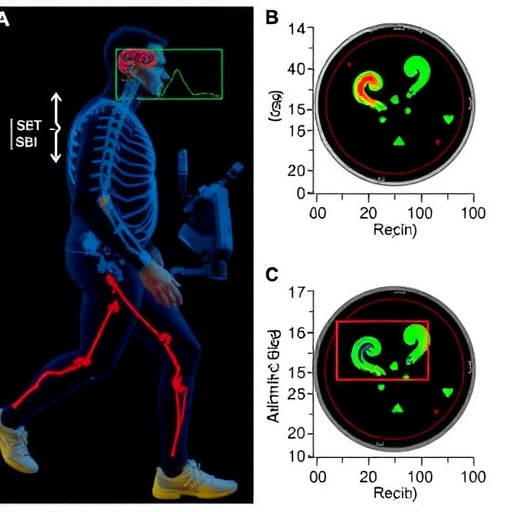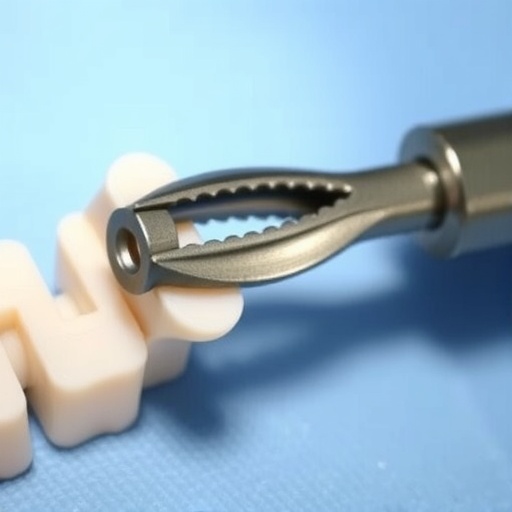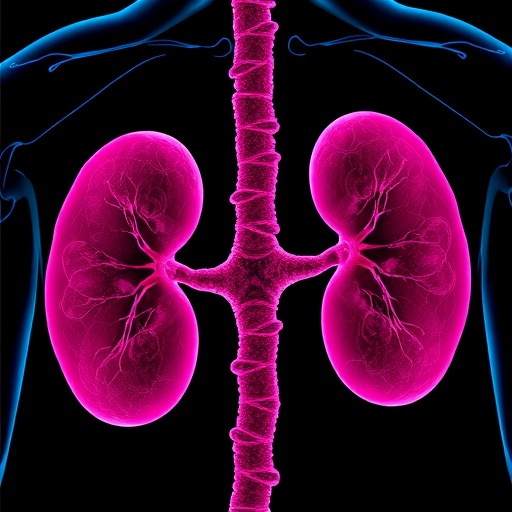
In a groundbreaking study that has the potential to redefine rehabilitation strategies for spinal cord injuries (SCI), researchers have highlighted the efficacy of body weight-supported treadmill training (BWSTT) in reducing glial scar overgrowth. This study, undertaken by Cai et al., presents remarkable insights into how BWSTT influences the behavior of astrocytes— a type of glial cell known for its role in scar formation following SCI during the critical subacute phase.
Understanding the biological responses to spinal cord injury is fundamental in developing effective therapies. The injury initiates a cascade of cellular reactions, leading to inflammation, scar formation, and ultimately, neuronal death. Glial scars serve as a protective barrier but paradoxically inhibit neuronal regeneration. In this intricate biological landscape, the researchers focused on identifying how BWSTT can modulate astrocytic behavior, promoting a more favorable environment for spinal cord repair.
The significance of this research cannot be overstated, as it connects the dots between exercise-based rehabilitation techniques and cellular mechanisms in SCI recovery. Previous studies have established that physical activity positively influences neuroplasticity and promotes neuronal survival. However, the specific cellular changes induced by BWSTT in astrocytes had not been extensively studied until now. The findings from Cai and colleagues add a critical piece to the puzzle by showing that BWSTT can downregulate astrocyte reactivity.
In their study, the researchers modeled spinal cord injuries in rats and subjected them to BWSTT. The methodology employed was meticulous, encompassing a period where the subjects were trained to walk on a treadmill while their body weight was partially supported. This approach facilitated movement without placing excessive stress on their injured spinal cords, simulating a rehabilitative environment akin to physiotherapy.
Post-training analyses revealed that rats subjected to BWSTT demonstrated significantly reduced levels of glial scar formation compared to those who did not receive this intervention. These results align with the hypothesis that physical movement can influence not only muscle recovery but also cellular responses at the injury site. The researchers meticulously quantified scar thickness and astrocytic activation markers, providing robust data that showcases the effectiveness of BWSTT in promoting a healthier microenvironment for spinal cord recovery.
Astrocytes play a dual role in injury repair; they can either support recovery by providing trophic factors or exacerbate damage through excessive scarring. The study indicated how BWSTT led to a shift in astrocytic function toward a more reparative phenotype, suggesting that the training alters the expression of key signaling pathways involved in astrocytic activation. This transformative effect opens new avenues for targeted therapies aimed at enhancing recovery in SCI patients.
Furthermore, the work of Cai et al. reinforces the principle of employing rehabilitation strategies that involve active participation from patients. Traditional recovery methods may sometimes lean heavily on passive treatments, which might not adequately address the biological complexities involved in SCI recovery. By integrating BWSTT into rehabilitation protocols, practitioners can provide patients with a dynamic approach that could lead to better functional outcomes.
The implications of this study extend beyond animal models and hint at a horizon where similar methodologies could be adapted for human subjects. Immediate application in clinical settings might focus on developing individualized exercise programs that optimize spinal recovery based on these findings. There exists tremendous potential to shape future rehabilitation frameworks that prioritize physical activity as an integral component of recovery.
Moreover, this research contributes a vital layer to understanding the time-sensitive nature of astrocytic responses during the subacute phase post-injury. With a window of opportunity to influence injury outcomes, BWSTT could emerge as a frontline strategy in the critical weeks following an SCI. By alleviating glial scar overgrowth early in the recovery process, patients may experience enhanced regeneration and functional recovery.
While optimistic, it is essential to contextualize these findings within the broader framework of SCI research. Future studies are needed to explore the long-term effects of BWSTT on neuronal pathways and functional recovery in more diverse populations. The promise shown in rat models warrants a cautious but hopeful approach in clinical settings, inviting a comprehensive assessment of how these mechanisms translate to human physiology.
In conclusion, the study by Cai et al. ushers in a new era in SCI rehabilitation, distinctly linking physiological training methods with cellular remodelling outcomes. By emphasizing the effects of BWSTT on astrocytic behavior and glial scarring, this research breathes new life into treatment methodologies that hold the potential for meaningful improvements in patient recovery. As we continue to unravel the complexities of spinal cord injuries, the path paved by this study may very well guide future innovation in therapeutic interventions aimed at restoring mobility and independence for those affected by such life-altering injuries.
Subject of Research: Body weight-supported treadmill training and its effects on glial scar overgrowth in spinal cord injury recovery.
Article Title: Body weight-supported treadmill training reduces glial scar overgrowth in SCI rats by decreasing the reactivity of astrocytes during the subacute phase.
Article References: Cai, J., Wang, Y., Zhai, C. et al. Body weight-supported treadmill training reduces glial scar overgrowth in SCI rats by decreasing the reactivity of astrocytes during the subacute phase. BMC Neurosci 26, 30 (2025). https://doi.org/10.1186/s12868-025-00947-7
Image Credits: AI Generated
DOI: 10.1186/s12868-025-00947-7
Keywords: Body weight-supported treadmill training, spinal cord injury, astrocytes, rehabilitation, glial scar, neuroplasticity, exercise therapy.
Tags: astrocyte reactivity reductionastrocytic behavior modulationbody weight-supported treadmill trainingcellular responses to spinal cord injuryexercise-based rehabilitation techniquesglial cell role in spinal cord injuriesglial scars and neuronal regenerationneuroplasticity and physical activityspinal cord injury recovery strategiessubacute phase of spinal cord injurytherapeutic implications of exercise in SCItreadmill training for spinal cord injury




